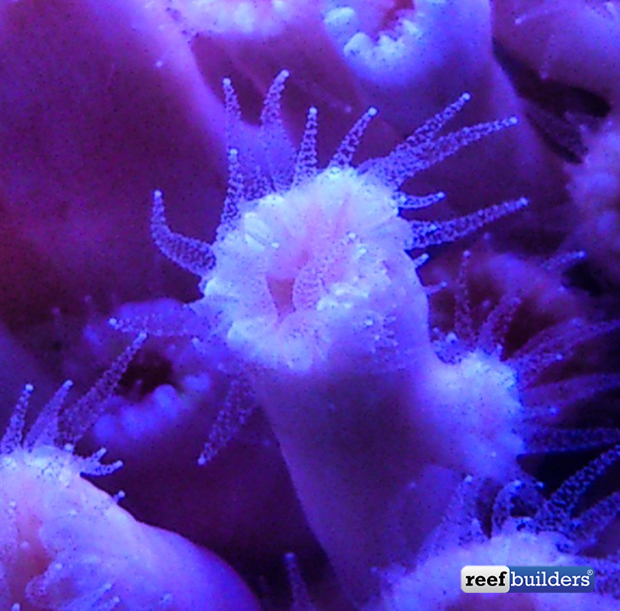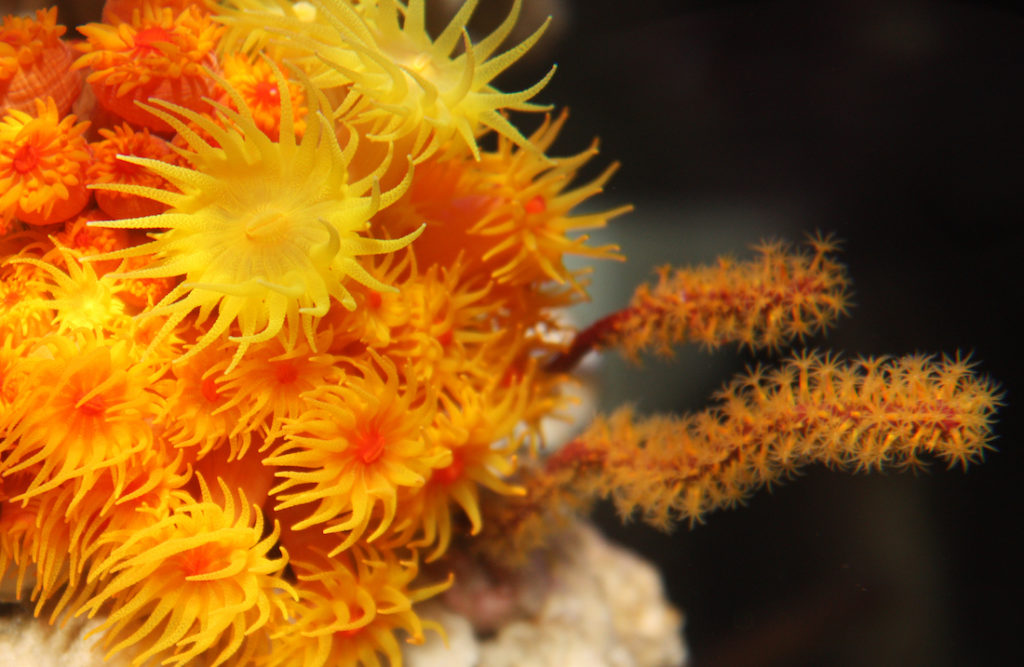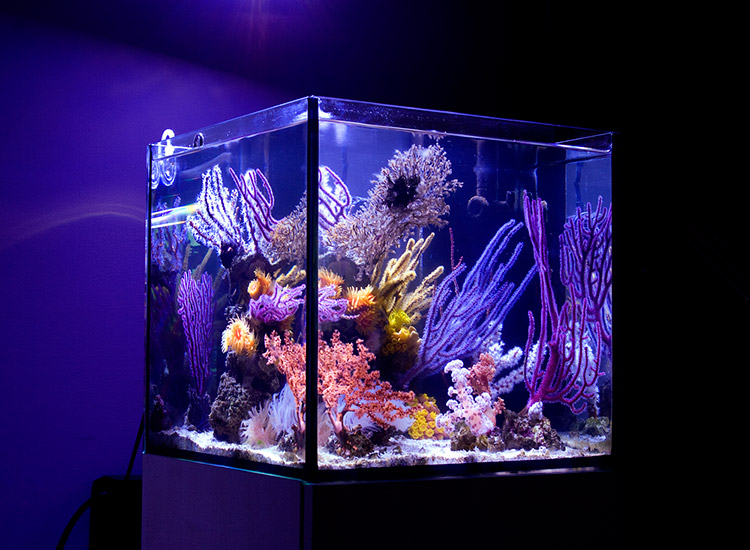One of the questions I get asked most often from people planning their NPS or azooxanthellate coral reef tank, besides my feeding schedule, is the ideal tank size for such a system. With regular, photosynthetic reef tanks, it’s a common tip to go as big as possible for water parameter stability and maximum coral real estate. But can this statement be applied to non-photosynthetic tanks too?
Over the years, I and many others have tried setting up NPS aquariums of varying sizes and volumes with different levels of success. Today I would like to look at different tank sizes and system configurations and their suitability for NPS corals.

Nano or Pico NPS Tanks
When we think about NPS coral reef tanks, we immediately think about large amounts of food being administered daily and the need for oversized filtration equipment in somewhat oversized sumps. With that assumption, cultivating “Azoox” in a standard nano tank seems impossible.
Fourteen years ago, user “thesmallerthebetter” on Nano-Reef.com shared his incredible 8-gallon (30l) Dendrophylliid-laden BioCube reef tank. The tank was stocked with over 20 varieties and color morphs of Dendrophylliids and ran for several years. With this being an all-in-one system, there was no space for advanced mechanical filtration or protein skimming.

The corals in this tank were fed ad libitum three times a week. After feeding, sedimented food was siphoned out and a 50% water change was performed. Although changing large percentages of your tank water thrice a week sounds daunting, with a tank that small and pre-prepared water, the chore is done in only a few minutes. It is important to note that this method of NPS reefing is better suited for the care and cultivation of large-polyp NPS as they accept larger food items such as Artemia and Mysis that are easily siphoned out after feeding.
Read the original thread here:
I use a similar method on my 2-gallon (8l) Pico Stylasterid concept tank, which runs completely without mechanical filtration. As the amount of food entering the water column daily is much lower, I found doing 95% water changes every month sufficient to keep up with water quality, essentially “resetting” the water parameters with every maintenance session.

Small Reef Tanks
Most unsuccessful NPS tanks I’ve seen fall into the category of small reef tanks with an average volume of about 25g (100l). At this volume, we enter the danger zone especially when gorgonians and other filter-feeders are added to the equation. Water quality can easily become an issue as larger water changes are more labor-intensive than in a nano reef tank. Depending on your location, using oversized skimmers and additional filtration methods can lead to problems with high system temperatures, especially in summer.
Many azooxanthellate corals and inverts should be kept cooler, so your ability to keep the temperature at an acceptable level should be considered. These problems can easily be solved by choosing a slightly larger aquarium (and larger sump) that allows housing all necessary filtration equipment without overheating or by plumbing in a secondary reef tank, which might be used as an algae refugium or just as additional filtration real estate.
Mega Tanks
Something mostly reserved for public aquariums and rarely seen in the aquarium hobby are super large NPS systems. Even though it would be expensive to achieve a high food density in such an aquarium on a daily basis, it can be done, as shown by German aquarist Boris Bielan, who maintained an 800-gallon mega NPS tank.
My recommendation
For anyone wanting to set up a full-blown NPS coral reef aquarium with gorgonians and other filter feeders, I recommend a tank size of about 50g (200l) in combination with a large sump. In a system of that size, aspects like achieving desired food concentrations and maintaining water quality through oversized filtration equipment and water changes are manageable while also providing plenty of space for displaying your beloved deepwater beauties.
About the author
Florian Gaudig is a 27-year-old microbiology teacher from Bavaria, Germany. He has been reefing for 12 years and started with keeping freshwater aquariums before switching to the salty side. From the very beginning, he has been fascinated by azooxanthellate/non-photosynthetic corals. About three years ago he converted his tank to 100% NPS. Since then, he has kept many different species of NPS but tends to focus on keeping gorgonians. Last year, he set up a specific tank for Stylasteridae. On his Instagram: @darksidereefing he tries to educate people about NPS reefing.




